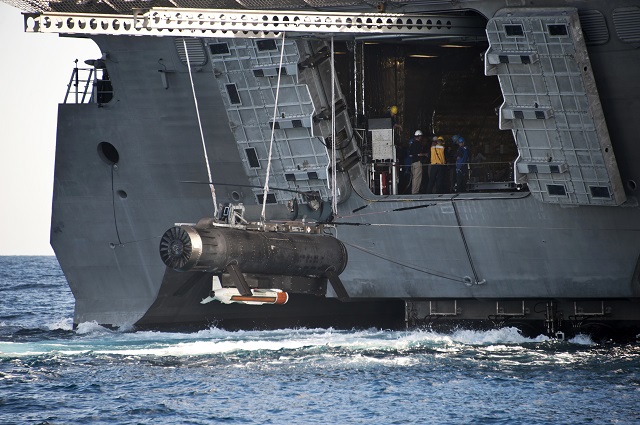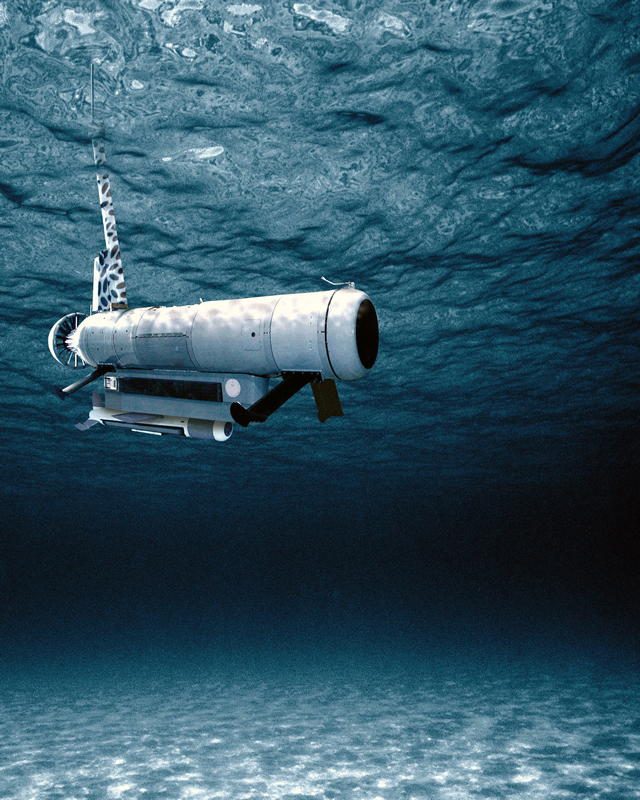| |
|||
| a | |||
Naval
Forces News - USA |
|||
U.S.
Navy's LCS Remote Minehunting System Completes Developmental Testing |
|||
The remote minehunting system (RMS) successfully completed developmental
testing, Dec. 9. The objective of the developmental testing (DT) was
to demonstrate that the RMS met reliability, suitability and effectiveness
requirements. Preliminary analyses of the results indicate that the
RMS operated as expected and the test objectives were achieved. |
|||
 GULF OF MEXICO (Jan. 7, 2012) The Remote Minehunting System (RMS) and an AN/AQS-20 mine hunting sonar are brought aboard the littoral combat ship USS Independence (LCS 2) during developmental testing of the mine warfare mission module package. (U.S. Navy photo by Ron Newsome/Released) |
|||
"This
at-sea test milestone validates the success of our RMS reliability growth
program," said Steve Lose, program manager for the RMS. "The
system's performance during the DT gives me confidence we are ready
to proceed to the operational assessment phase."
The RMS consists of the remote multi-mission vehicle (RMMV) and the towed AN/AQS-20A variable depth sonar. The system's purpose is to provide detection, classification, and localization of bottom, close-tethered, and volume mines in a single pass, as well as provide identification of bottom mines. The RMS will be deployed on the littoral combat ship (LCS) as a component of the LCS mine countermeasures (MCM) mission package (MP). With the RMS, the Navy will be able to keep its ships out of the minefield while conducting mine-hunting operations. The operations tested included the mission cycle, from pre-launch mission planning and vehicle readiness checks to operations in a simulated mine-field and post-mission data analysis. The tests demonstrated the capability of the RMS and the ability of Sailors to operate the system through various phases of an RMS mission. The testing was led by the Naval Surface Warfare Center-Panama City with LCS Squadron One, Detachment Three Sailors participating. The tests were conducted Oct. 22 through Dec. 9 off the coast of Palm Beach, Fla. The next event for the RMS will be the system's operational assessment led by Commander, Operational Test and Evaluation Force in January 2014. This testing will also take place off the coast of Palm Beach. During the summer of 2014 the RMS will support the developmental testing for the complete LCS mine countermeasures mission package. This will be followed in 2015 by initial operational test and evaluation (IOT&E), the Navy's final step to achieving initial operational capability for the MCM MP. PEO LCS is affiliated with the Naval Sea Systems Command
and provides a single program executive responsible for acquiring
and sustaining mission capabilities of the littoral combat ship class,
from procurement through fleet employment and sustainment. The combined
capability of the LCS ships and LCS mission systems is designed to
dominate the littoral battle space and provide U.S. forces with assured
access to coastal areas. |
 The Remote Minehunting System (RMS) is an organic, off-board mine reconnaissance system that will offer carrier battle group ships an effective defense against mines by using an unmanned remote vehicle. RMS is being designed for installation aboard Arleigh Burke-class destroyers. Current plans call for RMS to be first installed aboard the destroyer Pinckney (DDG 91) in 2004. U.S. Navy photo courtesy of Lockheed Martin. |
|||










